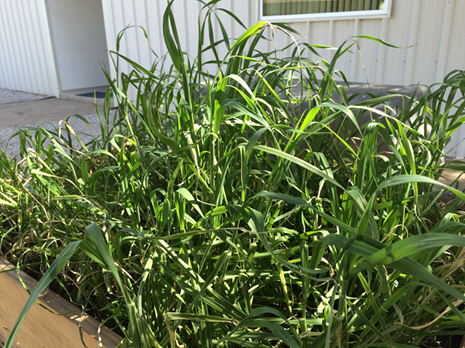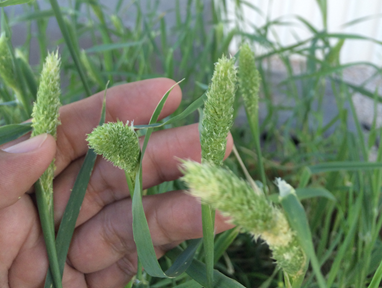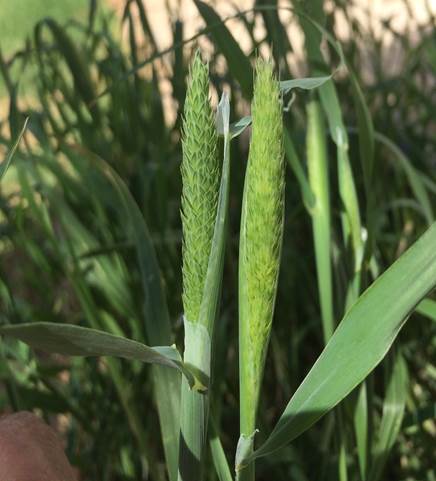
|
|
|
|

|
|||
|
|
|||
|
|
|||
Littleseed Canarygrass (Phalaris minor) is one of the most common winter annual
grasses found here. It is common in both field and vegetable crops. It is normally
controlled with both preemergence and postemergence herbicides. There are 7 species
of canarygrass that can be found in the western U.S. but littleseed canarygrass
is the only one that has previously been widespread here in the low desert. Dan
Fox from the Dune Co. recently identified a different species, Hood Canarygrass
(Phalaris paradoxa) in the Gila Valley. It is similar but can be easily distinguished
in the field. When Littleseed canarygrass is at the seedling growth stage, the leaves
are thin and exude a red fluid when broken. Hood canarygrass has a broader leaf
that resembles wheat and does not “bleed” when broken. At later growth stages, Hood
has a longer seedhead and the panicles are enclosed by an enlarged leaf. Although
littleseed canarygrass that is resistant to the ACcase inhibitor herbicides such
as clethodim (Select) and sethoxydim (Poast) can be found in the Imperial Valley,
resistance to these herbicides is more common in Hood Canarygrass. Multiple applications
of both of these herbicides were made to the field where Hood was found with little
effect. We can assist you in identifying these weeds if you send email us a picture
or drop some off at the Yuma Agriculture Center.

Before heading.

Phalaris paradoxa

Hood canarygrass is on the right.
To contact Barry Tickes go to: btickes@ag.arizona.edu.
|
|||
| Back | |||
|
For questions or comments on any of the topics please contact Marco Pena at the Yuma Agricultural Center.
|
|||
|
Home |
Cotton | Veggies |
Forages | Grains
| Citrus |
Crop x Crop Insects | Diseases| Weeds | Pesticides | Economics | News | Weather | Research | Photos | Contacts | General Info. Copyright © 2001 University of Arizona, College of Agriculture and Life Sciences Webmaster: Al Fournier (acis@ag.arizona.edu) |
|||
